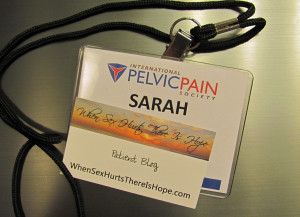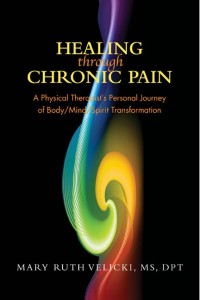I recently had the privilege of joining an amazing group of practitioners at the International Pelvic Pain Society’s 2015 Annual Meeting in San Diego. There is so much I want to share about the great information I heard and the remarkable people I met, but mostly I want to share about the hope that I was filled with. If you knew all that was being done to bring healing for chronic pelvic pain, you would be filled with hope too.
IPPS stands for the International Pelvic Pain Society (and #IPPS15 was the hashtag used during the conference if you want to catch some of the commentary that was posted on social media), but I’m going to use those same letters in my attempt to share some of why you should be encouraged to have this group of people fighting for your wellbeing.
I: Intelligent
Probably the first thing that struck me at the conference was the level of intelligence being represented. The presenters were astounding. I couldn’t count their degrees or the number of initials after their names (MD, PhD, DPT, and a bunch of others that I don’t know what they mean). As they discussed their research and other topics I was truly in awe. One example was experts in the neurological aspects of pain discussing how the brain interprets pain signals, including how chronic pain is processed very differently (even using different parts of the brain compared to acute pain).
 And it was not just the speakers exhibiting this intelligence, but also the attendees. As I looked around the room I saw so many of the pelvic pain greats—people like Dr. Irwin Goldstein and Dr. Echenberg, physical therapists like Amy Stein and Stephanie Prendergast, just to name a few. At least half of the attendees were physical therapists, and they were joined by doctors, nurse practitioners, researchers (and one blogger I might add). Those participating in the sessions not only understood what was being presented, but also had their own experiences, theories, and proven methods. Continue reading →
And it was not just the speakers exhibiting this intelligence, but also the attendees. As I looked around the room I saw so many of the pelvic pain greats—people like Dr. Irwin Goldstein and Dr. Echenberg, physical therapists like Amy Stein and Stephanie Prendergast, just to name a few. At least half of the attendees were physical therapists, and they were joined by doctors, nurse practitioners, researchers (and one blogger I might add). Those participating in the sessions not only understood what was being presented, but also had their own experiences, theories, and proven methods. Continue reading →
 I don’t like to admit it, but there are some times when I wish I wasn’t alone. I occasionally have those moments when I wish things were a little different. Most of the time I don’t think about it, or when I do I can’t get past the fact that relationships are hard and, frankly, not always worth it. When I do long for someone to love me I don’t think about my previous relationships. That is not the love that I want. I want someone to love me for me—for who I truly am, for who God sees me as. I try to believe in my heart that it’s possible, that maybe one day someone will love me like that.
I don’t like to admit it, but there are some times when I wish I wasn’t alone. I occasionally have those moments when I wish things were a little different. Most of the time I don’t think about it, or when I do I can’t get past the fact that relationships are hard and, frankly, not always worth it. When I do long for someone to love me I don’t think about my previous relationships. That is not the love that I want. I want someone to love me for me—for who I truly am, for who God sees me as. I try to believe in my heart that it’s possible, that maybe one day someone will love me like that.




